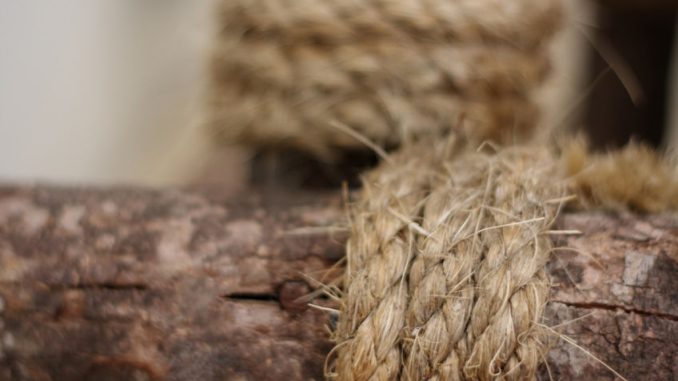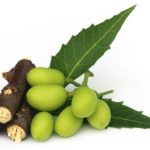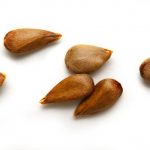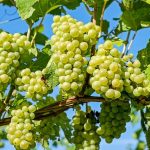
Kenaf has been grown for centuries as a cordage plant, one whose stem and stalk have been widely used for the production of high quality paper, biocomposites, fibre boards and bioplastics. It is now the most important natural fibre crop in the world. The Chinese grow over a million hectares every year fir all sorts of industrial product.
Kenaf also produces a very valuable seed which has strong commercial potential for nutritional and bio-diesel purposes and should be more widely known in food circles. The seed is a byproduct for planting and processing. It is usually discarded as a waste material although there is increasing use as animal feed, fertilizer and now oil processing. For many the seed oil might be the most important commercial product of this plant. The reasons are because there in increased demand for vegetable oils from new sources and the issue is being forced by greater scrutiny of key ingredients.
The common name kenaf belongs to the plant Hibiscus cannabinus L. in the Malvaceae family. It is an annual, woody tropical plant. It is thus a herbaceous crop grown mostly in India and Africa for its fiber. The leaves however are often eaten in various parts of the globe. The plant may be extremely attractive both as a fibre and forage crop because of the massive deforestation associated with palm oil production and cattle rearing (Chew et al., 2017).
Kenaf has been used as a traditional folk remedy in Africa and India having a long pedigree of treating a range of medical conditions from bruising to gastric issues and fevers (Lee et al., 2007).
Nutritional Value Of Kenaf Seed Oil
Perhaps of greatest valuable is the seed oil which has enormous nutritional value as well as being a potential source of bio-diesel (Coetzee et al., 2008). At the moment though the seeds are a byproduct of fibre production (Nyam et al., 2009) as we mentioned before.
Kenaf contains 28.8% carbohydrate, 21.8% crude protein, 20.8% oil, 13.6% crude fiber, 9.1% moisture, and 5.9% ash. It is also made up of various active components including tannins, saponins, polyphenolics, alkaloids, essential oils and steroids.
Kenaf Seed Oil
Kenaf seed oil is often compared to soybean oil because the seeds contain about 20% oil (Nyam et al., 2015). The oil has a relatively low linoleic acid and linolenic acid content (45.9% and 0.7% respectively) but a higher oleic acid (29.2%) level than soy which is 53%, 7.5% and 24.5% respectively based on Soxhlet extraction. The palmitic acid content is about 20%. Looking at the fatty acid composition of the seed oil suggests it is closer to cotton seed oil than any other (Mohamed et al., 2015). The phospholipid and sterol content of the seed oil is 6.0% and 0.9% respectively.
The seed oil is extracted commercially and refined using conventional processing methods which involve neutralization, degumming or defatting, bleaching and deodorization (Chew et al., 2017a,b). Other methods include using supercritical carbon dioxide (Chan and Ismail, 2009) or the much more simple but less sophisticated hexane extraction method (Mariod et al., 2011).
We can also find some other fascinating bioactive compounds including phospholipid, polyphenols, phytosterols, and tocopherols (Mariod et al., 2011; Wong et al., 2014a).
There is some evidence that defatted seeds yield a valuable phenolic-saponin rich fraction which might be added back to improve seed oil stability (Chan et al., 2014).
Vanillic acid is the most abundant phenolic compound in the seed oil then caffeic acid and gallic acid (Nyam et al., 2009).
Unfortunately, the seed oil from kenaf is not as stable as expected as it suffers readily from oxidation (Ng et al., 2015). Microencapsulation of the seed oil by spray drying improves its oxidative stability which is a common benefit of the processing.
Yields
The plant itself also provides important textile fibre, especially in Southeast Asia, China and other tropical countries. A Malaysian study suggested about 15 tons of kenaf stems for fibre production can be generated if the cultivation conditions are correct (Saba et al., 2015). Likewise, the yield of seeds is up to 100 kg/ka (Chan et al., 2014) but this depends on variety, climate and growing conditions, and the country or region even of cultivation. One estimate put the value as low as 80 kh/hectare and as high as 3819 kg/hectare (Cheng et al., 2016).
Treatment Of Medical Conditions Using Kenaf
The leaves are said to protect against red blood cell (erythrocyte) issues induced by various drugs according to various articles (unreferenced).
The seed oil has a variety of health benefits. These include anti-hypercholesterolemia, antioxidant, anti-cancer and anti-inflammatory benefits. The oil possesses cytotoxic activity with apoptosis (cell death) against ovarian cancer cell lines (CaOV3) and a colon cancer cell line (HT29) (Yazan et al., 2011) which may be due to a range of phytosterols. The seed oil has also been shown to decrease blood serum cholesterol levels including the ratio of low-density lipoprotein to high-density lipoprotein in the serum (Ng et al., 2015).
References
Chan, K.W., Iqbal, S., Nicholas, M.H.K., Ooi, D.J., Ismail, M. (2014) Antioxidant activity of phenolics—saponins rich fraction prepared from defatted kenaf seed meal. LWT – Food Sci. Technol. 56 pp. 181–6
Chan, K.W., Ismail, M. (2009) Supercritical carbon dioxide fluid extraction of Hibiscus cannabinus L. seed oil: a potential solvent free and high antioxidative edible oil. Food Chem. 114 pp. 970–975
, , & (2016). Kenaf seed oil: A potential new source of edible oil. Trends in Food Science and Technology, 52, pp. 57–65 (Article)
, , & (2017a). Application of response surface methodology for optimizing the deodorization parameters in chemical refining of kenaf seed oil. Separation and Purification Technology, 184, pp. 144–151 (Article).
Chew, S. C., Tan, C. P., & Nyam, K. L. (2017b). Optimization of bleaching parameters in refining process of kenaf seed oil with a central composite design model. Journal of Food Science, 82, pp. 1622–1630 (Article)
, , & (2008). Fatty acid and oil variation in seed from kenaf (Hibiscus cannabinus L.). Industrial Crops and Products, 271, pp. 104–109. .
Lee, Y.G., Byeon, S.E., Kim, J.Y., Lee, J.Y., Rhee, M.H., Hong, S., Wu, J.C., Lee, H.S., Kim, M.J., Cho, D.H., Cho, J.Y. (2007) Immunomodulatory effect of Hibiscus cannabinus extract on macrophage functions. J. Ethnopharmacol. 113 pp. 62–71.
Mariod, A. A., Matthäus, B., & Ismail, M. (2011). Comparison of supercritical fluid and hexane extraction methods in extracting Kenaf (Hibiscus cannabinus) seed oil lipids. J. American Oil Chemists’ Society, 88(7), pp. 931-935 (Article)
, , & (1995). Chemical composition of kenaf (Hibiscus cannabinus L.) seed oil. Industrial Crops and Products, 753, pp. 157–165.
Nyam, K. L., Tan, C. P., Lai, O. M., Long, K., & Yaakob, C. M. (2009). Physicochemical properties and bioactive compounds of selected seed oils. LWT‐Food Science and Technology, 42, pp. 1396–1403. (Article)
Ng, S.K., Tee, A.N., Elaine Lai, C.L., Tan, C.P., Long, K., Nyam, K.L. (2015) Anti-hypercholestrolemic effect of kenaf (Hibiscus cannabinus L.) seed high-fat diet Sprague dawley rats. Asian Pac. J. Trop. Med . pp. 6–13
Nyam, K.L., Tan, C.P., Lai, O.M., Long, K., Man, Y.B.C. (2009) Physiochemical properties and bioactive compounds of selected seed oils. LWT – Food Sci Technol. 42 pp. 1396–403.
, , & (2015). Effect of microwave pretreatment on stability of kenaf (Hibiscus cannabinus L.) seed oil upon accelerated storage. International Food Research Journal, 225, pp. 1898–1905. .
Saba, N., Jawaid, M., Hakeem, K.R., Paridah, M.T., Khalina, A., Alothman, O.Y. (2015) Potential of bioenergy production from industrial kenaf (Hibiscus cannabinus L.) based on Malaysian perspective. Renew Sustainable Energy Rev 42 pp. 446–59.
, , , , & (2014a). Binary solvent extraction system and extraction time effects on phenolic antioxidants from kenaf seeds (Hibiscus cannabinus L.) extracted by a pulsed ultrasonic‐assisted extraction. The Scientific World Journal, 2014, (Article)
, , , , & (2014b). Cytotoxic activity of kenaf (Hibiscus cannabinus L.) seed extract and oil against human cancer cell lines. Asian Pacific Journal of Tropical Biomedicine, 4, S510–S515 (Article).
Yazan, L.S., Foo, J.B., Ghafar, S.A.A., Chan, K.W., Tahir, P.M., Ismail, M. (2011) Effect of kenaf seed oil from different ways of extraction towards ovarian cancer cells. Food Bioprod. Process 89 pp. 328–32.



I think this grain is fantastic for baking with. I use it to pepper my bagels with and they work as well as poppy seeds. Really love them ! BMC
Just been reading this item because it came up on Google as cannabis. I guess the names do get confused. Mind you I can see the similarities with hemp.